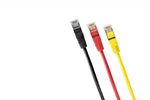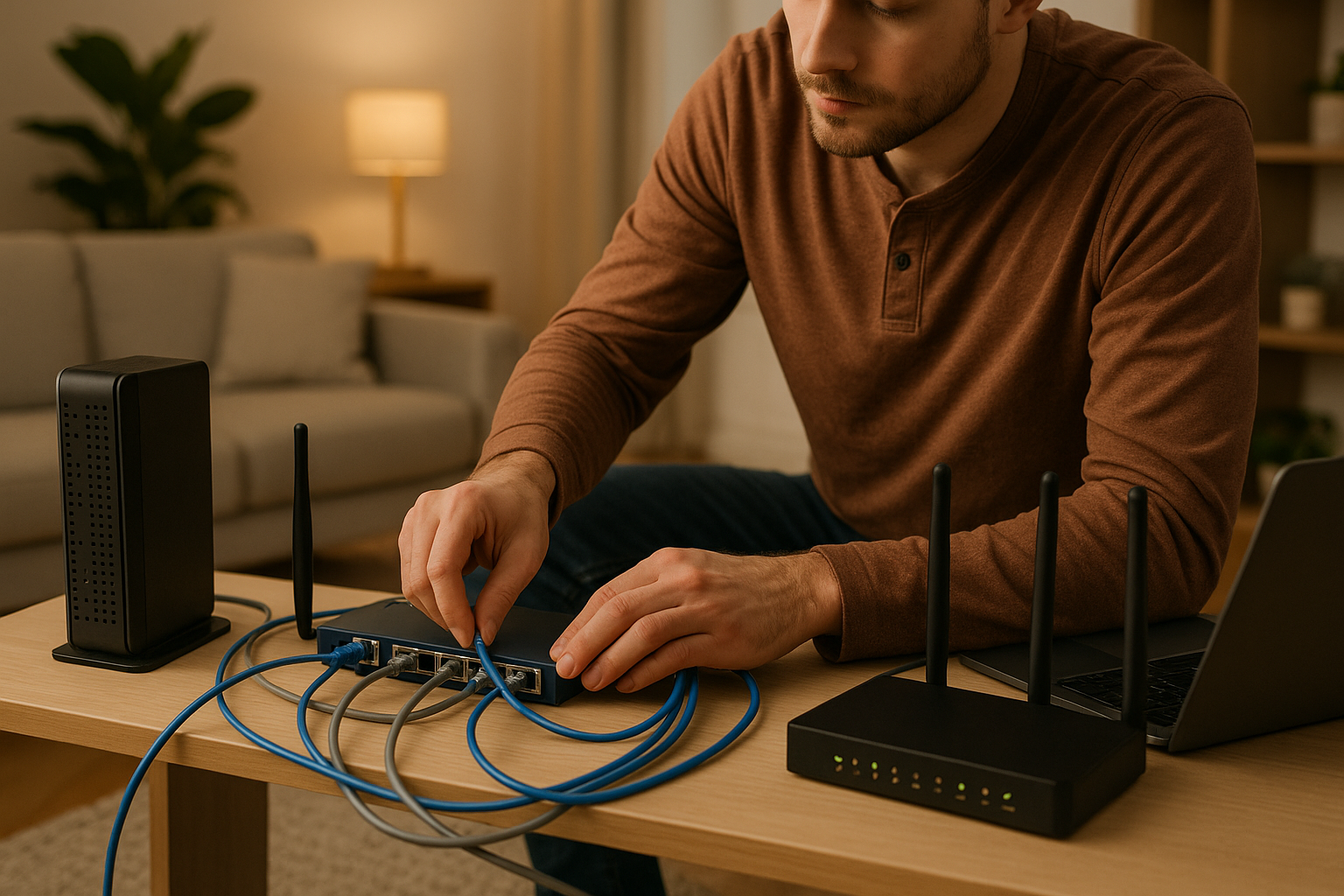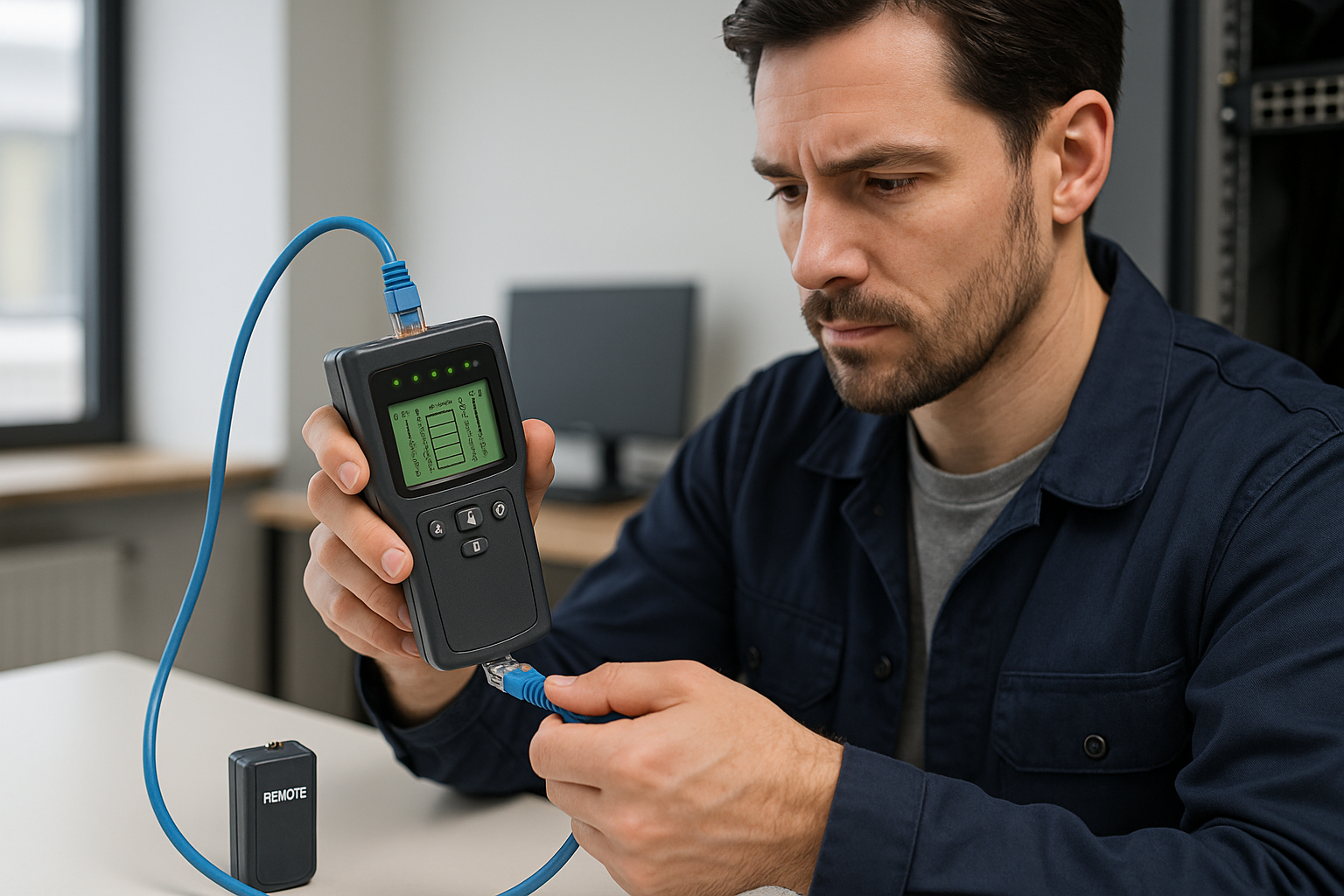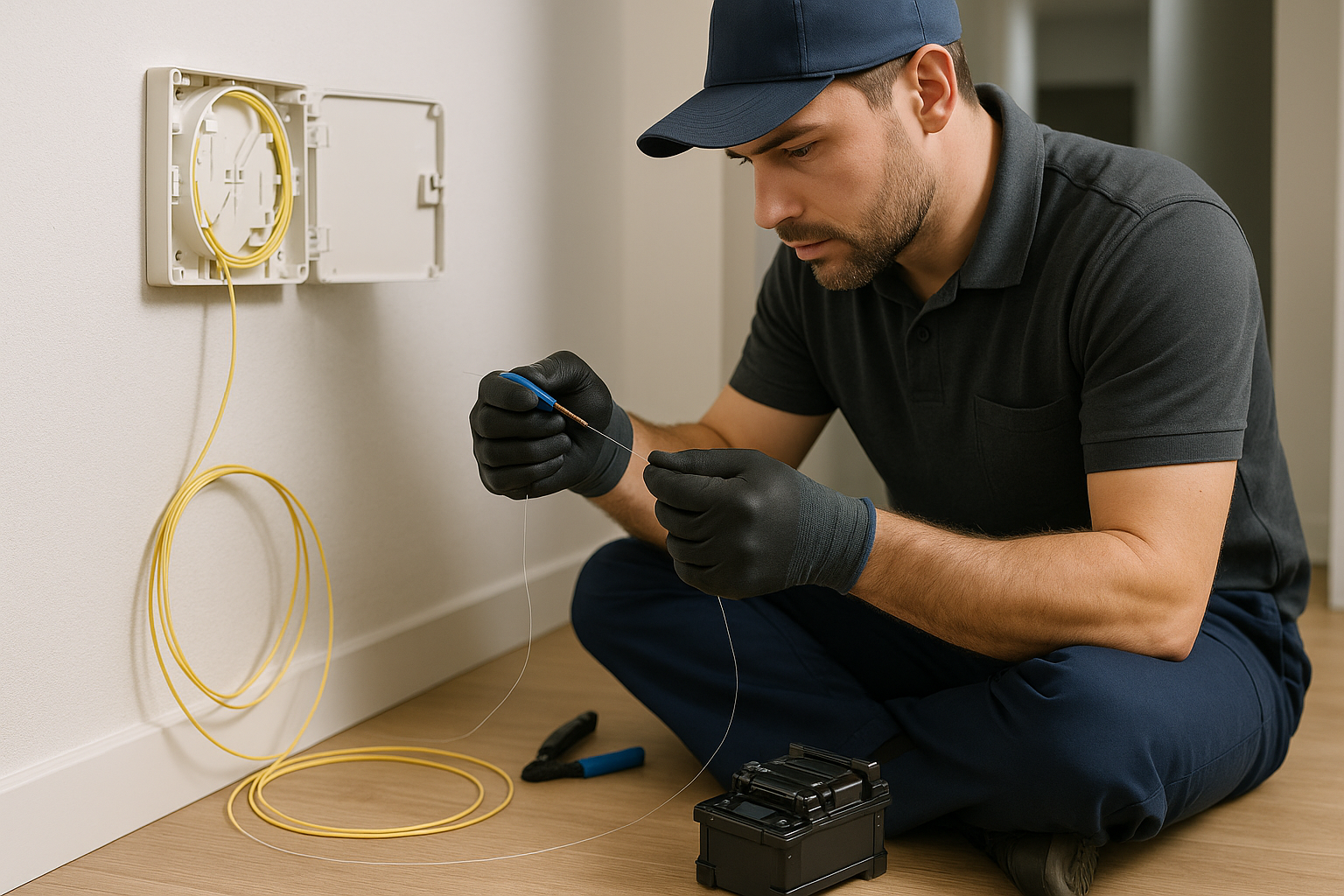What is the difference between Cat5 and Cat5e?
- , by
- 2 min reading time

Network cables, also called UTP cables or internet cables, are cables with eight different cores. These cables are usually used for data communication. If you have a plug in your laptop or PC for the internet, this is probably also a UTP cable.
Network cables, also called UTP cables or internet cables, are cables with eight different cores. These cables are usually used for data communication. If you have a plug in your laptop or PC for the internet, this is probably also a UTP cable.
Since 1985, nine different versions of the UTP cable have been released. Starting with Cat1 and lastly the Cat7. Cat1 is therefore the oldest and least developed version. Over time, a newer version has emerged that has technically better features compared to its predecessor. The biggest difference is that a Cat1 cable can only send 2 Mbit/s while a Cat7 cable has a capacity of 10,000 Mbit/s.
To understand the difference between a Cat5 and Cat5e cable, it is necessary to have some knowledge of data transfer. The two most important data to understand are the throughput (Mbit/s) and data (MHz). As long as the frequency of both cables is the same, the throughput speed in Mbit/s will indicate which cable is faster. The more Mbit/s, the faster the cable is.
The difference between Cat5 and Cat5e is that the Cat5e has a higher throughput speed of 1,000 Mbit/s. Also called Gbit/s. This is 10 times faster than the throughput speed of a Cat5 cable.
If you are in doubt between a Cat5 or Cat5e cable, we can advise you to go for the Cat5e cable. The reason for this is that Cat5e cables are also "backwards compatible". This means that you can always upgrade a network that is wired with Cat5 with Cat5e. All systems that work with a Cat5 cable therefore also work with a Cat5e cable.
��
How do you connect a Cat5 or Cat5e cable?
��
A UTP cable consists of a cable, containing eight different cores. A standardized protocol of signals runs on this, in order to ensure data transfer. This cable can easily be connected to a so-called RJ45 connector. This is a plastic plug where you press the veins and then with a special plier clamping the veins. It is very important that you place the veins in the correct order. This order is as follows:
White/orange ��� orange ��� white/green ��� blue ��� white/blue ��� green ��� white/brown ��� brown
Tags
Related categories
Check out our other blogs
-

, by Jarno Heideman How do you easily set up a home network yourself?
-

, by Jarno Heideman What are the color codes of UTP cables and how do you use them correctly?
-

, by Jarno Heideman How do you test a UTP cable without making mistakes?
-

, by Jarno Heideman How do you connect fiber optic yourself without any hassle at home?



